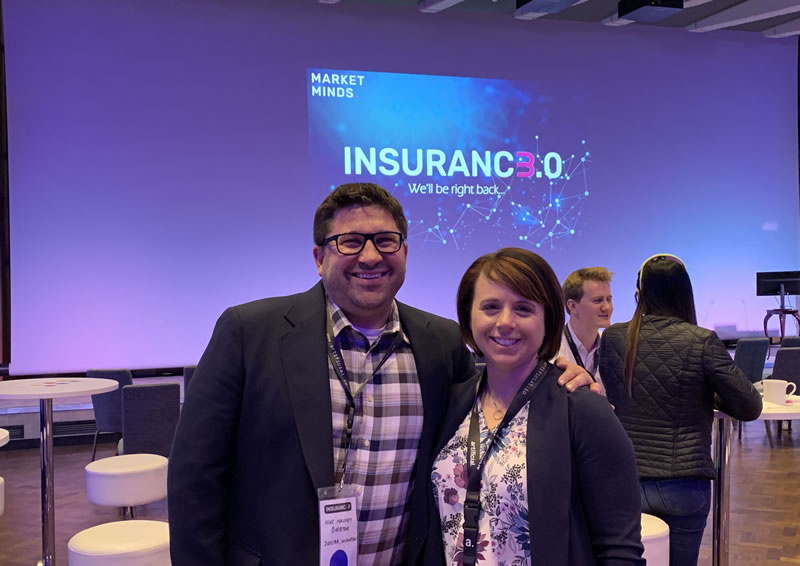RiverStone at the Insurance 3.0 Conference – 60 second interview with Beth Houlis and Mike Maloney
What were the big themes people are talking about at Insurance 3.0?
Mike: Some of the big themes we saw centered around artificial intelligence and machine learning, and how technology is continuing to force the insurance industry to evolve. A big topic on everyone’s mind is data and how to “productize” and monetize it. Insurance has always been data driven, but the level of insights is getting more prescriptive and precise. For example, everyone has an driver’s auto insurance policy, but based on the speed with which you take turns and how aggressively you brake and accelerate, it could impact your renewal rates. In the not-to-distant future, more conservative drivers will get lower rates.
Beth: Change was a big theme – not only from a technical perspective, but from a workforce perspective. The changing workforce is driving the imperative for companies to examine both workplace and hiring practices. From flexible work arrangements becoming a must-have to attract Gen Z workers, to providing a clearly defined growth path for new hires and the need for daily management feedback conversations (orally!), the discussion was all about how companies need to evolve to attract talent.
With the use of data increasingly becoming a competitive differentiator, were there any concerns about how data is used and secured?
Beth: Cyber security insurance and services were a prominent topic at the conference. The increasing sophistication of cyber-attacks both from a human and technical engineering perspective is increasing the challenge of cyber security exponentially. With large-scale cyber attaches, “black hats” are patient, and will wait sometimes for years to enact an attack.
Mike: For example, getting a “blue screen of death” is a pretty common occurrence, but black hats can be using this as a smoke screen to infect company devices and get login credentials. They then would work their way to financial machines to target the banks we work with. This is called a stepping stone attack, an attack where we may not be the primary target, but we are used to access the real target.
As far as how data is being used, most companies are very careful to ensure that data is being used to benefit the customer and create better products. At the end of the day, in the UK (and likely soon in the US), you own your data, so part of your personal cyber hygiene regiment should be to understand who has your data and for what purpose.
You mentioned that technology is driving the imperative for insurance companies to change. Could you tell us more about that?
Mike: Expectations are changing in the world. Profit margins are smaller. End-users are expecting a customer-centered focus at a lower cost. Technology and process optimization whether it is AI, data, better systems or better processes aren’t “nice to haves” any more. It’s critical for all of us to think about how we can change and evolve to anticipate both customer needs and a changing competitive market. If we don’t, someone else will.
Beth: We saw a number of pitches from start-ups trying to disrupt the insurance industry, from outside and from within. These start-ups have very similar ideas to what we’re working to do at RiverStone from a data science and technology perspective. RiverStone has a deep pool of resources that will help us capitalize on what we are working to do.
What’s your favorite part about visiting London?
Mike: Our London colleagues are so welcoming, which makes the long journey worth it. They always provide a different perspective, which we need in our innovation efforts. It also doesn’t hurt that the office is in the coolest part of London, right near the Tower of London.
Beth: I’m always awed by how old London is compared to cities in the U.S. The London office is right by a section of wall that dates back to Roman times – you can reach out and touch it! And the Brit building is truly impressive – and has a terrifying elevator ride up to the 39th floor.


